Gender is very nuanced and complex. As you learn more about it, you’re learning about something deep and expansive—like wines, for instance. At first, you might think there’s just white wine and red wine. But there’s a huge variety beyond that. There’s different kinds of grapes, like merlot, carmeniere, sangiovese. There are infinite ways they can blend. The region and year the grapes were grown makes a huge difference. How they’re processed changes the type of wine. And each wine maker has their own techniques. Like wine, the more exposure you get to the differences in gender, the more appreciation and understanding you will develop.
As gender-diverse people, not only have we developed language to describe our differences, but also symbols and flags. These help us recognize, find, and bond with each other.
Here’s a list of gender identities in alphabetical order, each with their associated gender pride flag. More gender identities are still becoming known and understood, so this list will grow and change over time.
Each one is listed alphabetically. To jump to the section just click the gender identity you’re interested in here:
- Agender
- Androgyne
- Bigender
- Demiboy
- Demigirl
- Genderfluid
- Genderqueer
- Gender questioning
- Neutrois
- Nonbinary
- Transfeminine
- Transgender
- Transmasculine
Agender pride flag
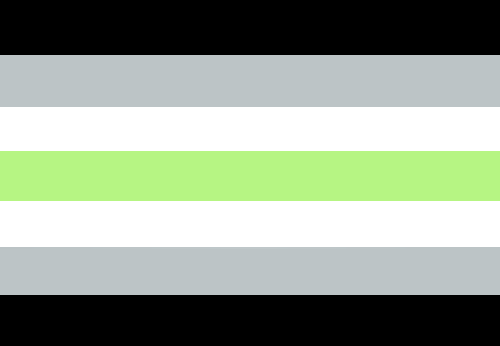
What agender means:
Agender is a person with no sense of gender.
Who created the agender pride flag?
The best I was able to dig up is that it was originally created in 2014 by an artist who used the name Salem. I couldn’t find any profile for them or link to their work. If you know more, leave me a comment!
What the agender flag represents:
- The black stripes represent a complete absence of gender.
- The white stripes also represent this absence.
- The grey stripes are to include people who have a partial absence of gender.
- The green stripe is the inverse of purple. Purple is often used to represent a combination of genders—so inverting it represents a negation of that concept.
Variations on the agender flag:
Agender people can lean towards identifying as male or female as part of their agender identity. This has leant itself to a few variations on the agender flag: for example, the agender boy and agender girl flags.
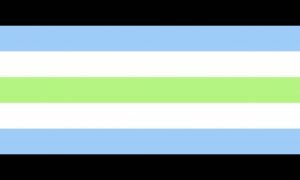
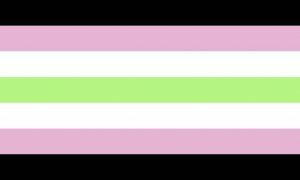
Androgyne pride flag

What androgyne means:
Androgyne is a gender that is somewhere between male and female, or a combination of both (but not necessarily in equal amounts).
Who created the androgyne pride flag?
The creator of this flag is unknown.
What the androgyne flag represents:
- The pink represents femininity
- The blue represents masculinity
- The purple represents the two combining
Bigender pride flag

What bigender means:
A bigender person has two genders they either switch between or experience simultaneously.
Who created the bigender pride flag?
The creator of this flag is unknown. If you have info on this, leave me a comment!
What the bigender flag represents:
- The white is a reflection of the white at the center of the transgender flag, which stands for nonbinary identities and/or a shift from one gender to another
- The purple is used to represent a combination of genders.
- As it’s used in many flags, the pink—a traditional color used for baby girls—represents femininity
- Likewise the blue—a traditional color used for baby boys—represents masculinity
Demiboy pride flag
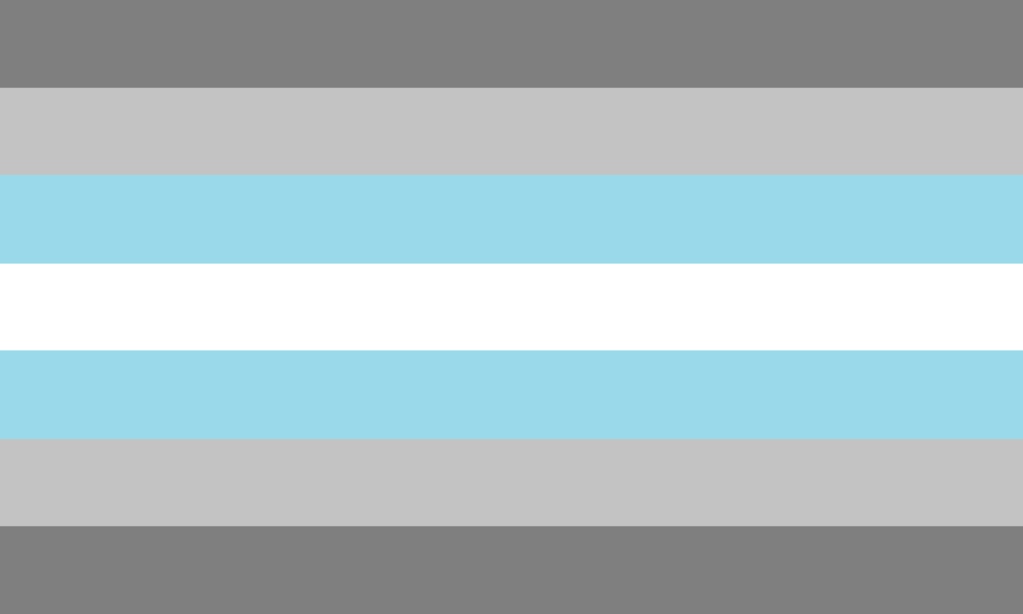
What demiboy means:
A person with the demiboy gender is somewhat male, but not entirely.
Who created the demiboy pride flag?
The creator of this flag is unknown. If you have info on this, leave me a comment!
What the demiboy flag represents:
- The white is a reflection of the white at the center of the transgender flag, which stands for gender neutrality or a questioning and shifting of gender
- The blue—a traditional color used for baby boys—represents masculinity
- The shades of grey indicate the partial nature of the gender—somewhat, but not entirely.
Demigirl pride flag
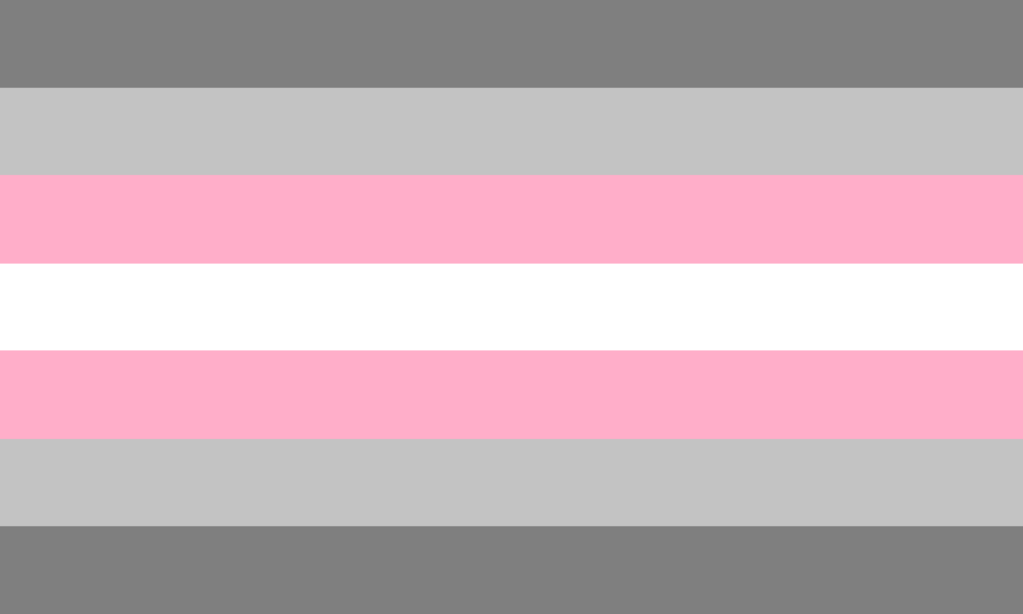
What demigirl means:
A person with the demigirl gender is somewhat female, but not entirely.
Who created the demigirl pride flag?
The creator of this flag is unknown. If you have info on this, leave me a comment!
What the demigirl flag represents:
- The white is a reflection of the white at the center of the transgender flag, which stands for gender neutrality or a questioning and shifting of gender
- The pink—a traditional color used for baby girls—represents femininity
- The shades of grey indicate the partial nature of the gender—somewhat, but not entirely.
Gender fluid pride flag
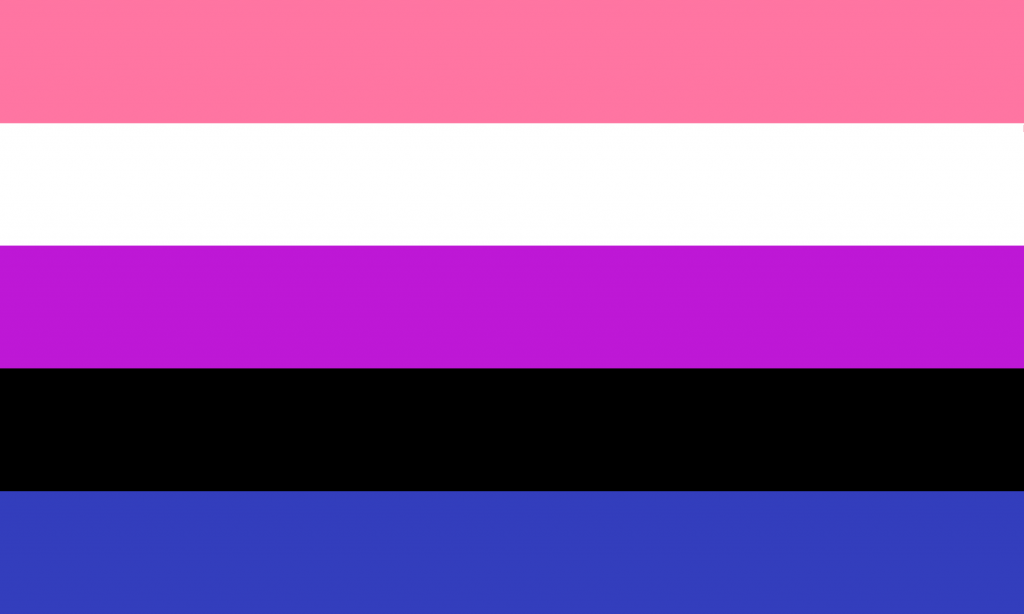
What genderfluid means:
A person whose gender varies in a fluid way between two or more genders.
Who created the genderfluid pride flag?
The genderfluid pride flag was created in 2012 by an artist named JJ Poole.
What the genderfluid flag represents:
- The pink represents femininity
- White represents the infinite ways that genders can combine
- Purple represents a combination of masculinity and femininity
- Black represents genderlessness
- Blue represents masculinity
Genderqueer pride flag

What genderqueer means:
A person whose gender identity is outside of the gender binary. A term that came into being before “nonbinary;” the two terms are sometimes used interchangeably.
Who created the genderqueer pride flag?
This flag was created in 2011, but its creator is unknown.
What the genderqueer flag represents:
- Lavender represents a combination of masculinity and femininity
- White represents a questioning of gender or a neutral gender.
- Green represents genders which are defined outside of masculinity or femininity
Gender questioning pride flag

What gender questioning means:
Gender questioning covers anyone who is not certain about the specifics of their gender identity, but is questioning whether they really are cisgender.
Who created the gender questioning pride flag?
This flag was created in 2017 by an artist named Roswell.
What the gender questioning flag represents:
The flag is a conglomeration of colors from a variety of gender pride flags. The pink and blue tones represent femininity and masculinity, and the grey in the middle represents uncertainty and seeking answers.
Neutrois pride flag

What neutrois means:
An umbrella term for neutral genders (includes agender). Sometimes it refers to genderlessness, sometimes a neutral combination of male and female.
Who created the neutrois pride flag?
The creator and date is unknown.
What the genderqueer flag represents:
- White represents a questioning of gender or a neutral gender.
- Green, like in the agender flag, is inverted purple, representing genders outside of male and female.
- Black is an absence of gender.
Nonbinary pride flag
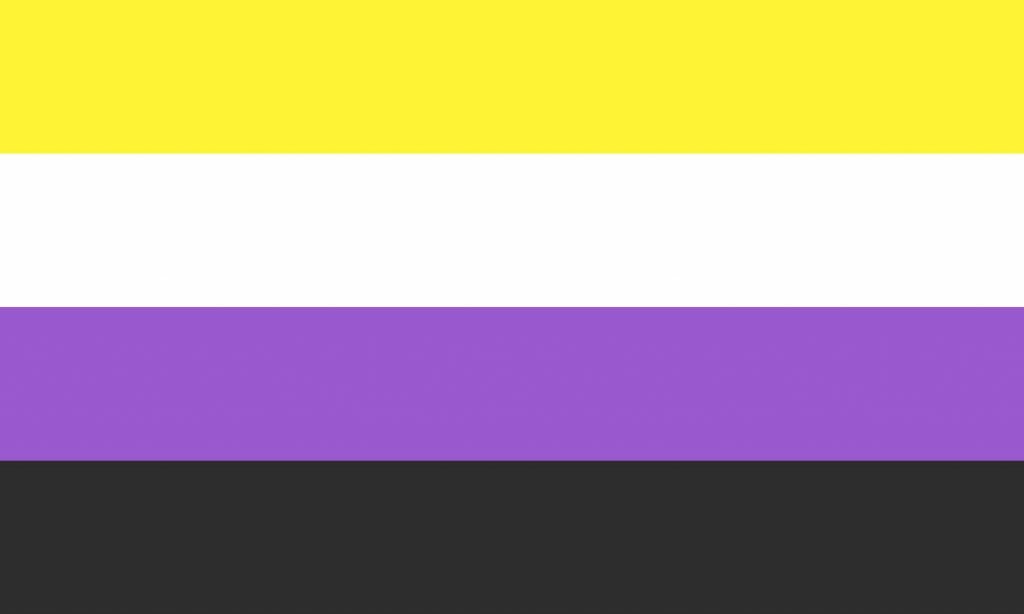
What nonbinary means:
A person who is neither male nor female; an umbrella term for all the genders that are not strictly binary. A term that came into being after “genderqueer;” the two terms are sometimes used interchangeably.
Who created the nonbinary pride flag?
The nonbinary pride flag was created by Kye Rowan in 2014.
What the nonbinary flag represents:
- Yellow represents genders outside of the gender binary (like the green in the genderqueer flag)
- Purple represents a combination of male and female (like the lavender in the genderqueer flag)
- Black represents an absence of gender (like the white in the genderqueer flag)
- White represents those who embrace many or all genders
Transfeminine pride flag
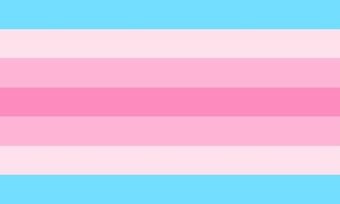
What transfeminine means:
A person who is trans in the direction of femininity, but may or may not be a transgender woman.
Who created the transfeminine pride flag?
The creator of this flag is unknown. If you have info on this, leave me a comment!
What the transfeminine flag represents:
- The blue represents masculinity
- The different shades of pink represent femininity, increasing in intensity as they reach the center.
Transgender pride flag

What transgender means:
A person whose gender is different from the one they were assigned at birth.
Who created the transgender pride flag?
The transgender pride flag was created by Monica Helms, a transgender woman, in 1999.
What the transgender flag represents:
- The white stands for nonbinary identities and/or an absence of gender
- The pink—a traditional color used for baby girls—represents femininity
- The blue—a tranditional color used for baby boys—represents masculinity
Transmasculine pride flag

What transmasculine means:
A person who is trans in the direction of masculinity, but may or may not be a transgender man.
Who created the transmasculine pride flag?
The creator of this flag is unknown. If you have info on this, leave me a comment!
What the transmasculine flag represents:
- The pink represents femininity
- The different shades of blue represent masculinity, increasing in intensity as they reach the center.

Very cool! Thanks for the info!
Monica Helms, a trans woman, designed this flag in 1999, and it was first flown at a Pride Parade in Phoenix a year later. “The light blue is the traditional color for baby boys, pink is for girls, and the white in the middle is for those who are transitioning, those who feel they have a neutral gender or no gender, and those who are intersexed,” Helms noted. “The pattern is such that no matter which way you fly it, it will always be correct. This symbolizes us trying to find correctness in our own lives.”